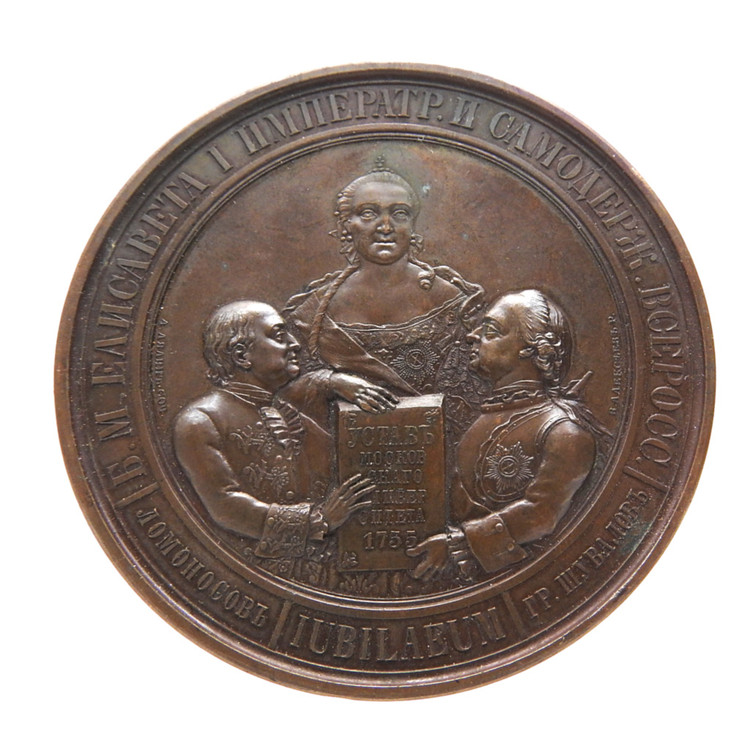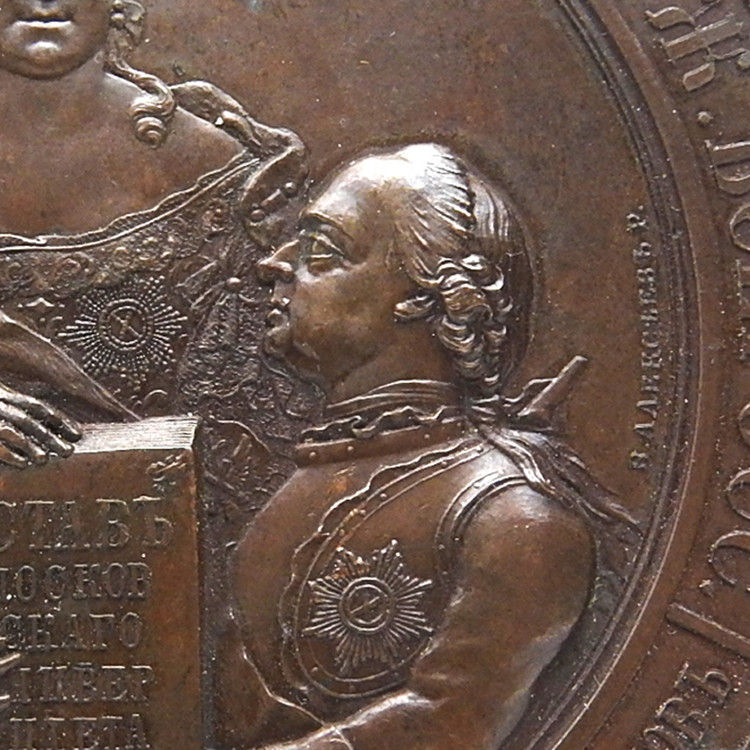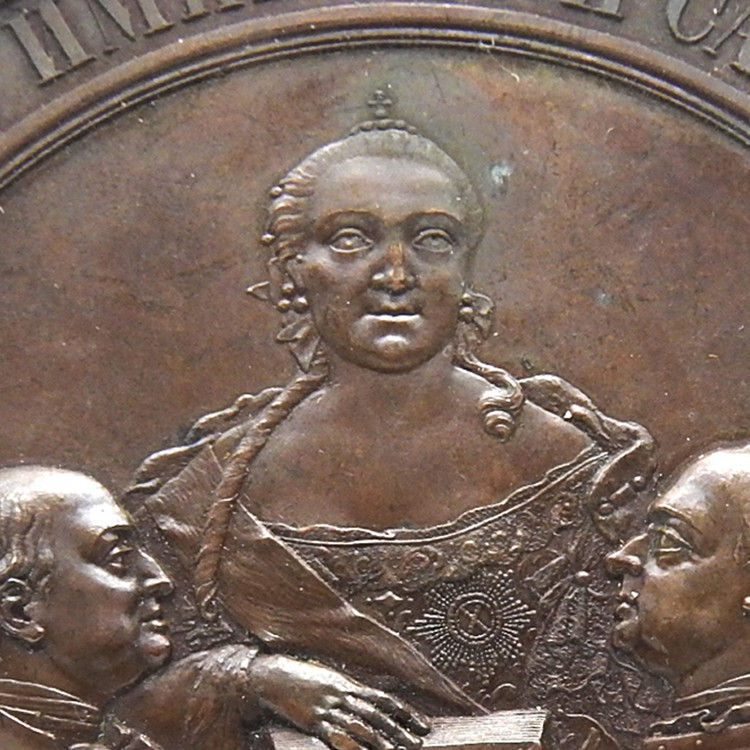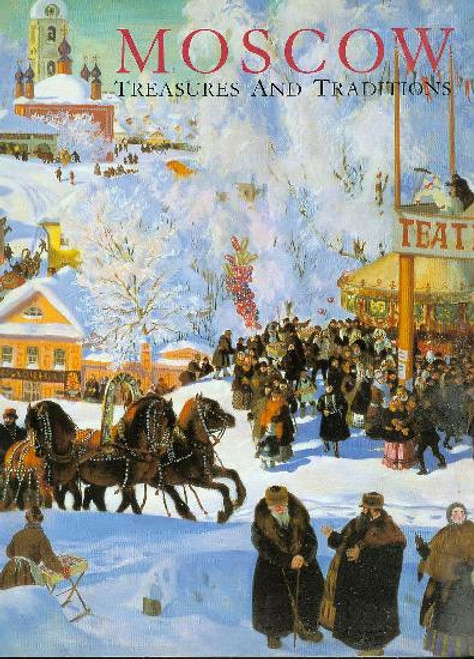Product Description
1855 Bronze Table Medal issued to commemorate the 100th Anniversary of Moscow University. Obverse: M. Lomonosov and P.I. Shuvalov presenting the Charter of Moscow University to Empress Elizabeth I. Reverse: Crowned two-headed Russian eagle with didated date (18-55) below the claws. Lettering: Б.М.ЕЛИСАВЕТА I IМПЕРАТР. И САМОДЕРЖ. ВСЕРОСС. В. АЛЕКСЕЕВЪ Р. ЛОМОНОСОВЪ IUBILAEUM ГР. ШУВАЛОВЪ. Translation: By God’s grace Elizabeth I Empress and Autocrat of all Russia. The image of Elizabeth Petrovna was made according to an engraving by an unknown master of the 18th century. She is depicted gazing upward befitting the seriousness of the matter, in a luxurious dress with a somewhat low neckline and a small crown on her head. Over her shoulder is the ribbon of the Order of St. Andrew the First-Called (highest award of the Russian Empire). M. Lomonosov appears here for the first time on a medal.
Bronze. 202.31g. Diameter 79.2 mm. St. Petersburg Mint. Obverse: medalist V.V. Alekseev based on a sketch by A.P. Lyalin (to the left near the circle "A. Lyalin SOCH."; to the right near the circle "V. ALEX & # 1122ЕВЪ R."); Reverse: medalist M.V. Kuchkin (under the eagle: "P & # 1122Z. M. KUCHKIN."). Smirnov 555. Dyakov 614.1.
XF+ condition. Superbly engraved with intense light brown patina. Brilliant, clear matte relief with superior image detail. Free of marks. Minor oxidation, guaranteed genuine and not a restrike). Quite rare. Dies by V. Alexeev and M. Kuchkin (see below).
How did a portrait of Count Pyotr Shuvalov, who had nothing to do with the university, end up on the jubilee medal in honor of the 100th anniversary? In 1851, a special committee was created under the chairmanship of then rector A.A. Alfonsky. A prototype drawing of the medal was created with a portrait of Emperor Nicholas I on the obverse and an image of M.V. Lomonosov and I.I. Shuvalov, presenting the Charter of Moscow University to Empress Elizabeth Petrovna on the reverse. Nicholas I requested that his figure be omitted from the medal and the Russian coat of arms be put in his place. This fuss subsided only to be replaced with another. After the release of the medal, it was noticed that the signature on the medal “Count Shuvalov” was incorrect. Ivan Ivanovich Shuvalov (1727-1797), who was part of the court of Empress Elizabeth Petrovna, was not a count. The actual count was his brother Pyotr Ivanovich Shuvalov (1710–1762), minister and chairman of the Military Collegium. However, upon closer examination, it turned out that the signature was correct and the medal really shows Count P.I. Shuvalov, who had nothing to do with Moscow University. A.P. Lyalin, entrusted with the production of the design, received a description approved by the emperor, where Count Shuvalov was listed in black and white. Since the initials of this count were not indicated in the description, the portrait of Count Shuvalov was copied from a medal dedicated to him in 1758.
The image of the coat of arms of the Russian empire depicts the double-headed eagle with Imperial crowns, scepter and orb and the Moscow coat of arms showing St. George the Victorious striking a dragon with his spear. The eagle wears the chain of the Order of St. Andrew the First-Called. On the wings are several coats of arms of the kingdoms that are part of the Russian Empire: Kazan, Astrakhan, Siberia and Poland, Taurian Khersones and Finland.
Medalists involved were Vasily Vladimirovich Alexeev (1823-1901), senior medalist at the St. Petersburg Mint from 1845–95. (He traveled abroad to study the methods of creating dies.) Mikhail Vasiilievich Kuchkin (1818-1873) also worked at the SP Mint beginning in 1845. Alexander Pavlovich Lyalin (1802-1862), who was the designer, was senior medalist at SPM in 1843, chief medalist in 1852 and headed the medal class at the Imperial Academy of Arts.























![My Ringside Seat in Moscow [1952] My Ringside Seat in Moscow [1952]](https://cdn11.bigcommerce.com/s-kgl10g/images/stencil/500x659/products/4087/38361/Ringside_Seat_FC__84755.1659381958.jpg?c=2)

